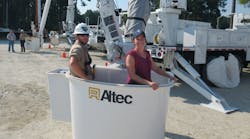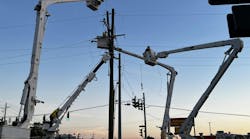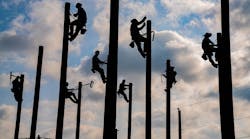Throughout North America, utility managers wrestle with the same challenges. Many companies are installing the same type of technology, trying to find ways to upgrade aging infrastructure and looking for ways to train their field workforce.
Through research, testing, and trial and error, electric utilities have discovered what works and what doesn’t work in the field. Utilities are saving time and resources through collaboration with other companies.
Industry meetings sometime involve only companies in a regional area, but at least once a year, utility managers across North America meet in one spot for a week-long conference. The Transmission and Distribution Maintenance and Management Association (TDMMA) enables crew chiefs to come together to swap stories, learn about trends and technology, and network with peers.
For the last three years, I’ve had the pleasure of attending this conference and meeting many readers of Transmission & Distribution World and of the “Electric Utility Operations” section. By attending the technical tours at the host utility’s training facilities, listening to the presentations and talking to the attendees, I’m able to tap into the heartbeat of the utility industry and learn what topics are most important to our readers.
This year, about 150 transmission, distribution and substation managers from the United States and Canada convened in Myrtle Beach, South Carolina. The event kicked off with a technical tour at Santee Cooper’s distribution training yard and control center, and an equipment expo sponsored by Altec.
For a few hours, the attendees were able to talk with the linemen about the heavy equipment they are using in the field. For example, the utility is using a machine called the Duct Dawg from Sherman & Reilly, bucket trucks from Altec, a Condor, the MarshMaster and a Bell helicopters.
To get an aerial view of the expo, the managers could take a ride in a 100-ft bucket truck or a 150-ft Condor. I opted for the ride in one of their latest bucket trucks, and I overcame my fear of heights by zooming up 100 ft above the training yard in a bucket with one of the linemen. As we were high above the grounds, he told me what it was like to work as a lineman in South Carolina, from dealing with the snakes in the swamp to working in the hot and humid weather.
For the next three days, TDMMA provided panel discussions in the mornings and open forum workshops in the afternoons. Utility leaders shared their experiences with everything from identifying corrosion on steel structures to emergency response and installing new technology.
The first day began with a talk by Lonnie Carter, president and CEO of Santee Cooper. According to Carter, and many other conference attendees, utilities are charged with providing reliable service while doing more work with fewer people. Today’s linemen are not only responsible for learning about the latest technology from smart meters to mobile computing, but they must also try to work efficiently and safely in the field.
The topic of safety stirred a lot of discussion at the conference. Two of the presenters from Sacramento Municipal Utility District and Pacific Gas & Electric talked about their near-miss programs, and a speaker from Santee Electric discussed his company’s initiative to improve its bucket rescue training.
A new open forum on journeyman training also sparked a lot of discussion on the importance of skills training for veteran linemen. While utilities are mandated to provide a minimum level of training each year, some companies are going above and beyond these sessions to provide continuing education for their journeymen, and in the process, finding ways to transfer knowledge from these veterans to the apprentices.
By meeting in South Carolina, the managers were able to identify challenges and come up with solutions. The collaboration, however, does not end now that the attendees are back at their home utilities. Throughout the year, the managers will email each other with issues they’re having in the field. By pulling together, the utilities can help to boost the reliability of the grid while making their field workforce safer and more productive.
Editor’s note: The 2014 TDMMA conference will take place in Los Angeles, California, and will be hosted by the Los Angeles Department of Water & Power. For more information, visit www.tdmma.com. To see photos from the technical tour and conference, visit www.tdworld.com/electric-utility-operations.


